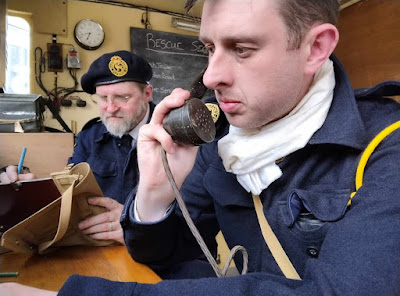Sheffield Gales, 16th February 1962 .
Part Two - The Aftermath.
Continued from Sheffield Gales, 16th February 1962. Part One - The Gales hit and the Civil Defence Response.
The gales left three dead and two hundred and fifty injured in Sheffield and in total eleven people died across Britain due to the winds. All those who died in Sheffield; John Johnson (aged 17), Shirley Hill (aged 30) and Ida Stabbs (aged 57) were killed when chimneys collasped into their houses.
From the Star special "Hurricane" edition via the Sheffield History forum. .
One of the floodlight pylons at the Bramall Lance football ground had collapsed, luckily into the empty stadium and not onto nearby houses. Poilce assured the local populace that the Sheffield Wednesday Vs Norwich City F.A. cup tie would still go ahead.
From llustrated London News - Saturday 24 February 1962
A crane working on the extension to the city College of Technology was blown over.
First Estimate of the Damage (21.2.62)
Private Houses
Houses written off 181
Houses so badly damaged that they can only be
repaired if the tenants are moved out 169
Houses to be repaired in the next few days or
they will be completely written off 2,945
Houses with minor damage 39,145
Total Private Houses damaged 42,440
Corporation Houses
Houses damaged 36,000
Houses written off 74
Houses that will become uninhabitable if there
is heavy rain during the next few days 3,000
Houses so badly damaged that they can only
be repaired if the tenants are moved out 169
Houses to be repaired in the next few days or
they will be completely written off 2,945
Total Corporation Houses damaged 39,145
GRAND TOTAL 81,514
This totals to nearly 70% of all the housng in Sheffield being damaged to some degree by the gale!
From the Star special "Hurricane" edition via the Sheffield History forum. .
Many of those made homeless lived in the post-war "pre-fab" houses in the area around Skye Edge Avenue and Algar Drive. Most of the "pre-fabs" were badly damaged and several destroyed completely.
On the 20th February 1962. The Times carried the following report:
SHEFFIELD STORM CLAIMS NEAR £3M.
Insurance offices in Sheffield alone are expecting over 50,000 claims for damage to property and its contents the latest estimates for which are now put at around £2m. There were queues at all the offices yesterday as policy holders filed their claims and were told to carry on with repairs. sending in the bill afterwards. Of the 100,000 houses damaged in Sheffield about half are insured against storm damage and the remainder, largely owned by the Sheffield Corporation. were either not covered in the insurance market or only against fire. It is not unusual for local authorities to carry risks themselves in connection with their own housing estates .
£3 Millon pounds in 1962 is equalent to £67.5m today but the final bill ended up as over £5m or £112.5m today.
From the Star special "Hurricane" edition via the Sheffield History forum. .
Sheffield's Public Works labour force was overwhelmed by the amount of work needed and council workers from Birmingham and Coventry arrived to assist them. The local drill hall at Endcliffe and RAF Norton provided accommodation for them.
Sheffield fire brigade, the Civil Defence Corps. the city engineer's dangerous structures department and the Army authorities had already dealt with 2,200 dangerous buildings. The Lord Mayor set up an emergency appeal fund to help the 250 people made homeless and those who couldn't yet retun home.
From the Star special "Hurricane" edition via the Sheffield History forum. .
In addition to the damage to buildings, hundreds of trees came down, causing problems to those trying to get through to help with the buildings,
A final quote from the Local Press indicates the public feelings about the Civil Defence Corps and other workers who helped after the Gales:
“Throughout the city there must be hundreds of householders feeling much safer now that these men have been round and happier knowing that they will be available again in the next emergency”.
Many places other than Sheffield were damaged that day:
SOURCES:
(1) The Star special "Hurricane" edition via the Sheffield History forum. .
(2) Civil Defence magazine Vol. 14 No.4 April 1962
(3) The Sheffield Gale - 16th February 1962 by Chris Hobbs
































